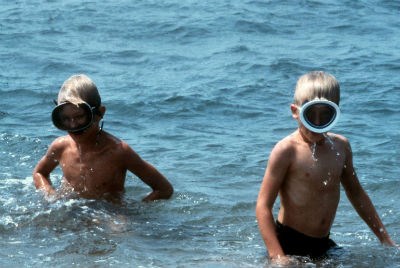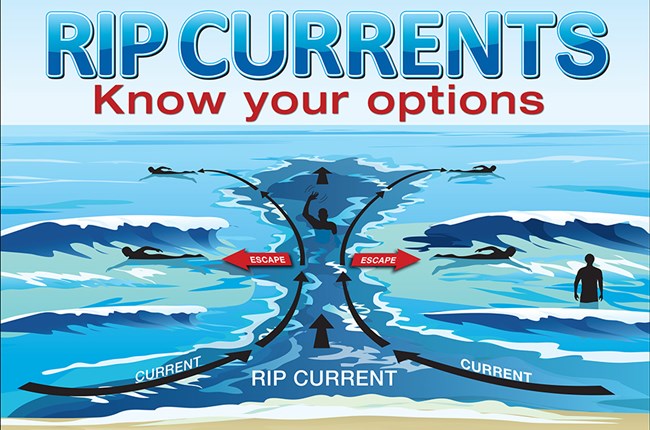
No Lifeguard on duty: swim at your own risk.Swimming is a popular activity at Cape Lookout National Seashore, especially in the summer when water temperatures can reach 80 degrees Fahrenheit. Surfers enjoy the remote location that offers the right combination of swell, wind, and sand. Great waves, turquoise water, and sandy beaches call swimmers and surfers to the seashore. However, there are risk visitors should be aware of. Swimming is prohibited within 50 feet of the passenger ferry dock in the lighthouse area. This closure is marked by buoys. The Beaufort Inlet beach on the western end of Shackleford Banks is closed to swimming due to the strong currents from the inlet. This closure is marked by signs on the beach.Remember: Swimming in the ocean is not like swimming in a lake or pond. Currents, tide changes, winds, waves, and other factors should be considered when choosing if and where to swim. Before going in the water, spend a few moments watching the waves. Wave patterns are good indicators of the presence of currents, sand bars, and deep water troughs. Rip CurrentsRip currents—commonly called rip tides and incorrectly called undertows—are strong, narrow, river-like currents that are moving away from the shore. If you are caught in a rip current, do not panic. The current will pull you out into deeper water, but it will not pull you under. 
Courtesy of NOAA The best way to escape is to wade or swim parallel to the beach until you are out of the current. Then, when free, wade or swim back towards shore at an angle from the current. Do not attempt to swim directly against the current as you will only exhaust yourself. If you see someone else caught in a rip current, don't become a victim, too. Call 911. Send someone to the visitor center, cabin office, or other area where rangers and volunteers can be found. Throw the rip current victim something that floats—a lifejacket, a cooler, an inflatable ball. Yell instructions on how to escape. Certain weather conditions can make these currents stronger and more dangerous. Weak swimmers and children are advised to stay out of the ocean when there is an increased threat of rip currents, and even strong swimmers should stay out of the ocean on dangerous days. Rip Current advisories can be found posted at the park visitor centers or on NOAA's beach forecast. 
NPS Photo/S.Godin Swimming Safety Tips

NPS Photo Portuguese Man-o-WarThese blue and purple jellyfish look inviting, but they are painful. Portuguese Man-o-War tentacles can pose a risk to bare feet even after the organism has died. So, let’s keep your beach fun and safe by avoiding attempts to pop the blue float. If you bring your pets with you, make sure their nose and paws avoid these jellyfish. The U.S. National Library of Medicine, National Institutes of Health, offers advice on how to treat jellyfish stings. StingraysAlong North Carolina's coast, stingrays often swim within a few yards of shore. They love to lie on the bottom and cover themselves with sand, which is how most people get stung. While stingrays aren’t aggressive, if you follow one too closely, you might catch the stingray’s sharp stinger! If you ever get stung by a stingray, make sure to visit the nearest medical facility as soon as possible. The U.S. National Library of Medicine and the National Institutes of Health offer great advice on how to treat stings from a stingray.
|
Last updated: June 28, 2025
